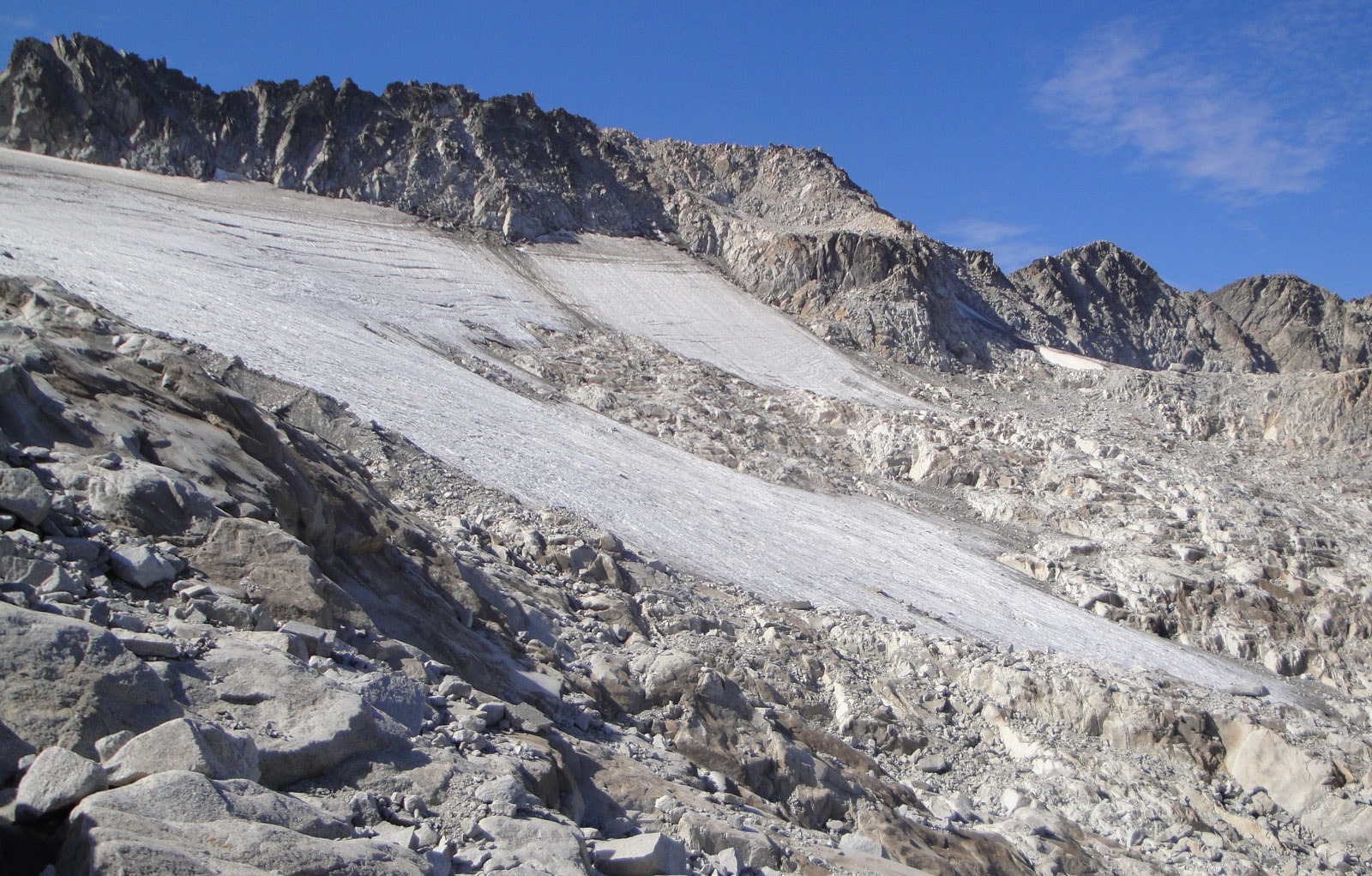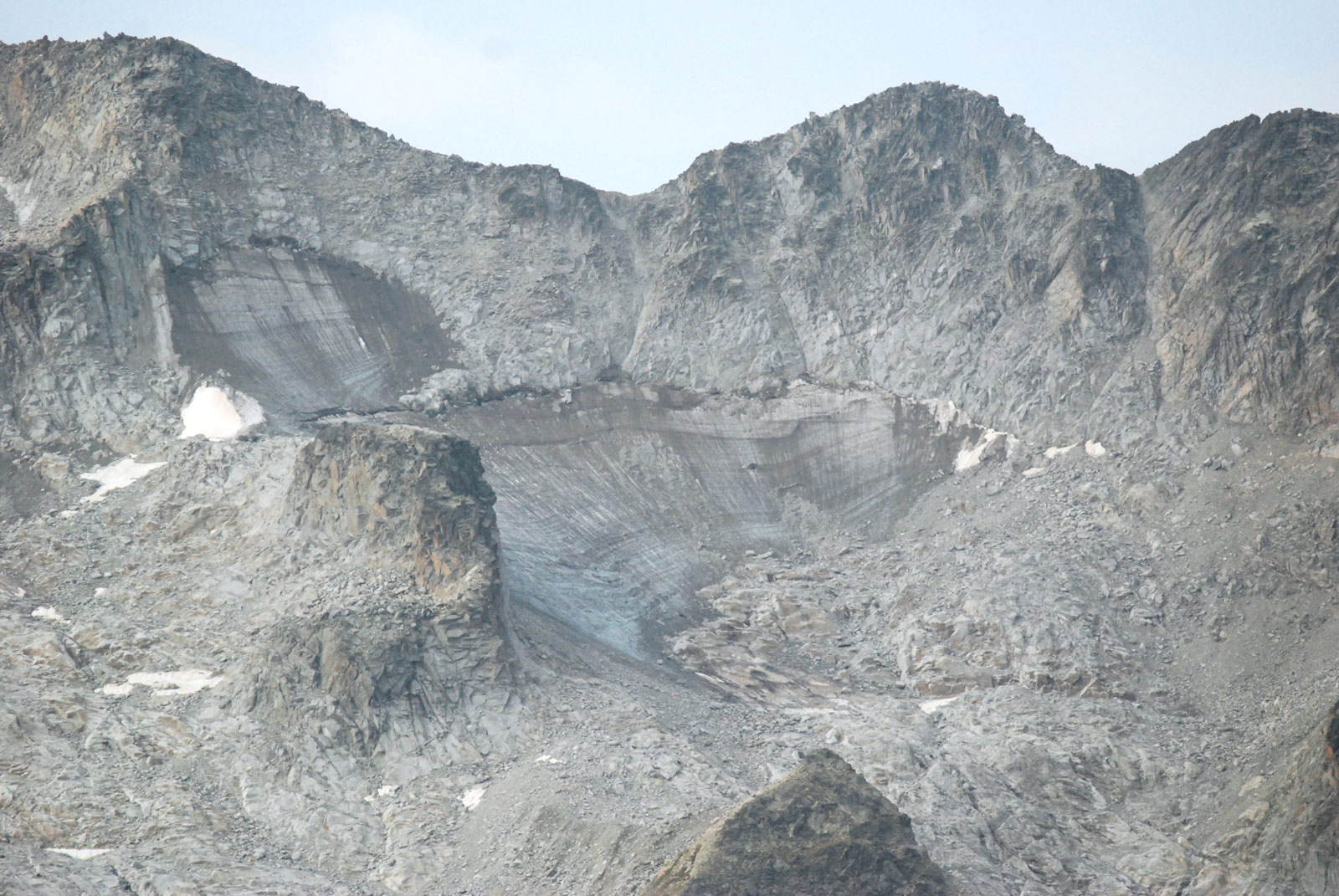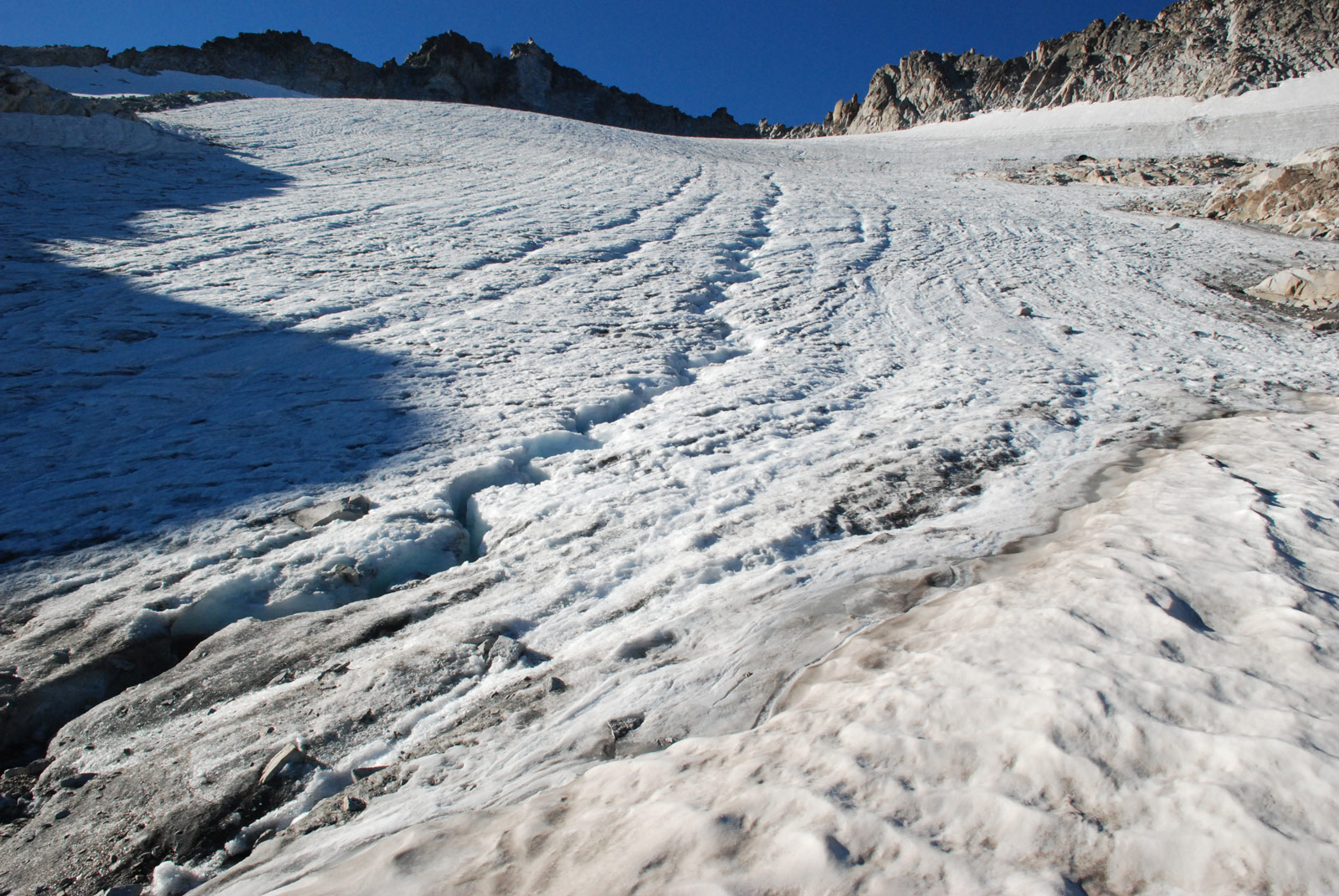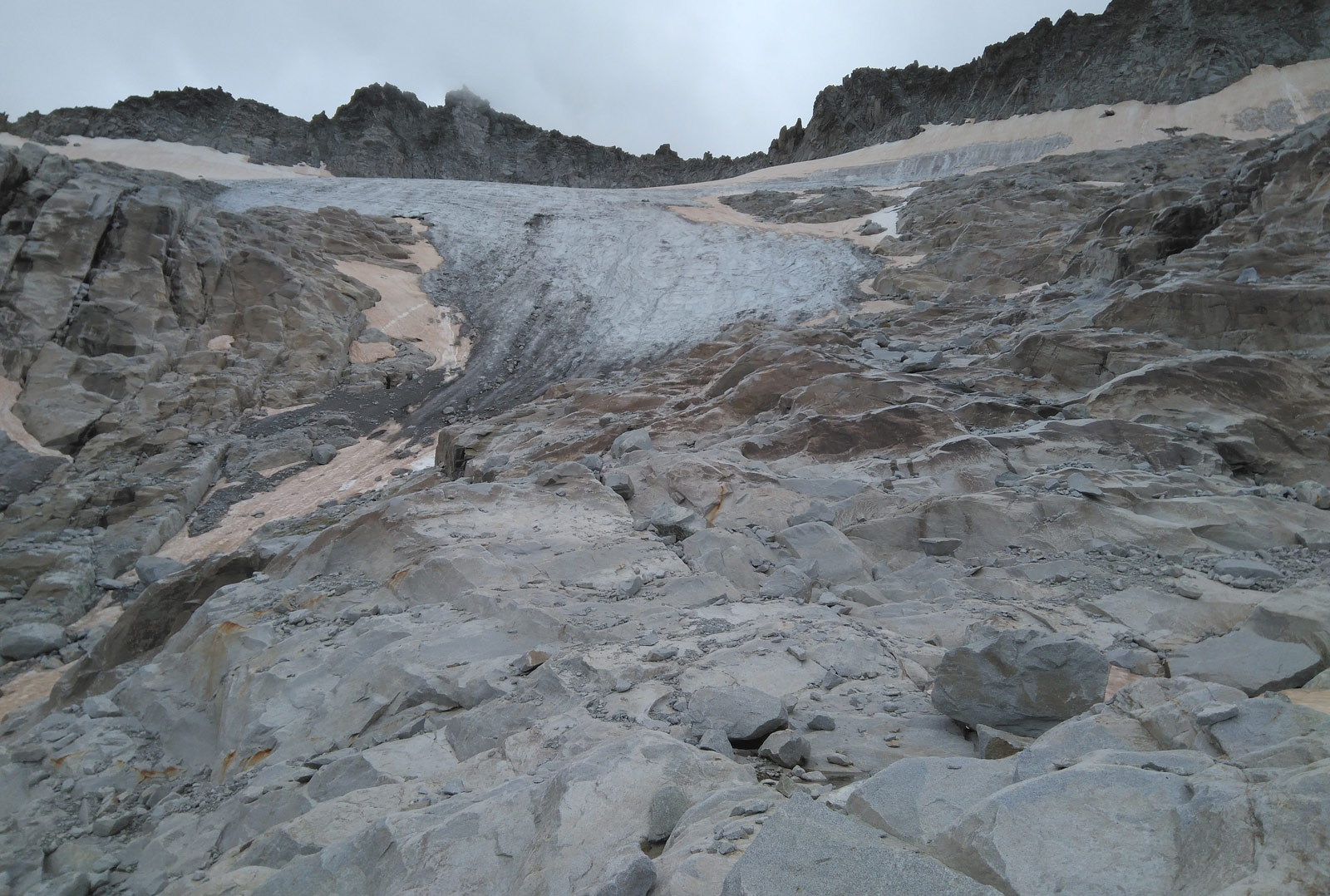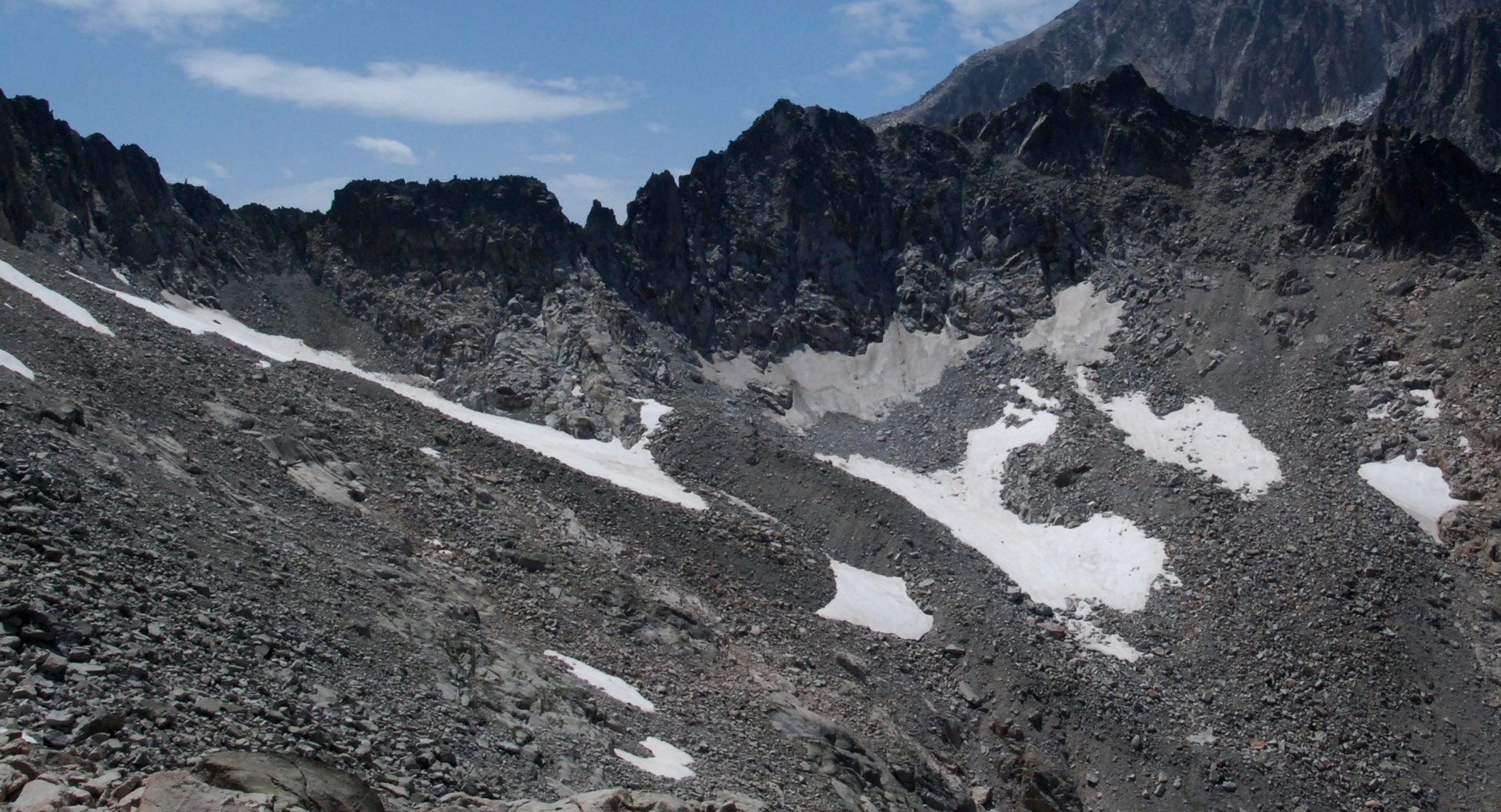The East Glacier and the West Glacier of the Maladeta as individual glaciers are a consequence of the splitting in 1990 of the original Maladeta Glacier.
During the Little Ice Age, with a surface area of 128 ha, it was the first largest glacier in the massif and the fourth largest in the Pyrenees. Its tongue reached a maximum length of 1,520 m, the 5th longest in the whole mountain range.
Considered individually, the East Glacier of the Maladeta is still the fourth largest glacier in the Pyrenees with 13.9 ha. It conserves an incipient tongue of ice and shows the identifying elements of a glacier: moraines, different forms of crevasses, among which a visible rimaya recently stood out. Occasionally, until a decade ago, a subglacial grotto allowed access to its interior.
Despite its northeast orientation, since 1992 the retreat of its tongue has been 385 m, with an average of 12 m/year. The loss of thickness of this glacier ranged between 45 and 50 cm/year until the beginning of this century, and currently exceeds 3 m/year.
The photographs objectively show the deterioration of all sectors without exception. In the eastern basin, a partially overgrown frost bowl, barely 0.3 ha in size, is the result of a deterioration that began to become visible in this sector in 2007. In the westernmost sector, it is already possible to foresee a forthcoming split that will form a new independent heliport.
The Western Icefield of the Maladeta is the result of a split that occurred around 1990 in the Cordier Tower sector. During the Little Ice Age, the Diente de la Maladeta was completely enclosed by ice, and the Cordier Tower emerged as an islet among a large ice mass. Between 1960 and 1985, its retreat was not very significant.
In the years following the split, the glacier remained active. In 2006, longitudinal cracks began to appear on its surface. The process of deterioration has accelerated until in 2023 it lost all signs of activity and was de-listed as a glacier. Despite its small total area of 2.3 ha, it is considered the 14th largest glacier in the Pyrenees, and the third largest among the glaciers.
In order to understand its rapid retreat, the image of 2012 is significant, where the total absence of snow on the ice testifies to one of the recurrent years with a negative mass balance, without the generation of new ice.
Este aparato glaciar pertenece al siguiente macizo:
15) East of the Maladeta and 16) West of the Maladeta
Comparativa de imágenes
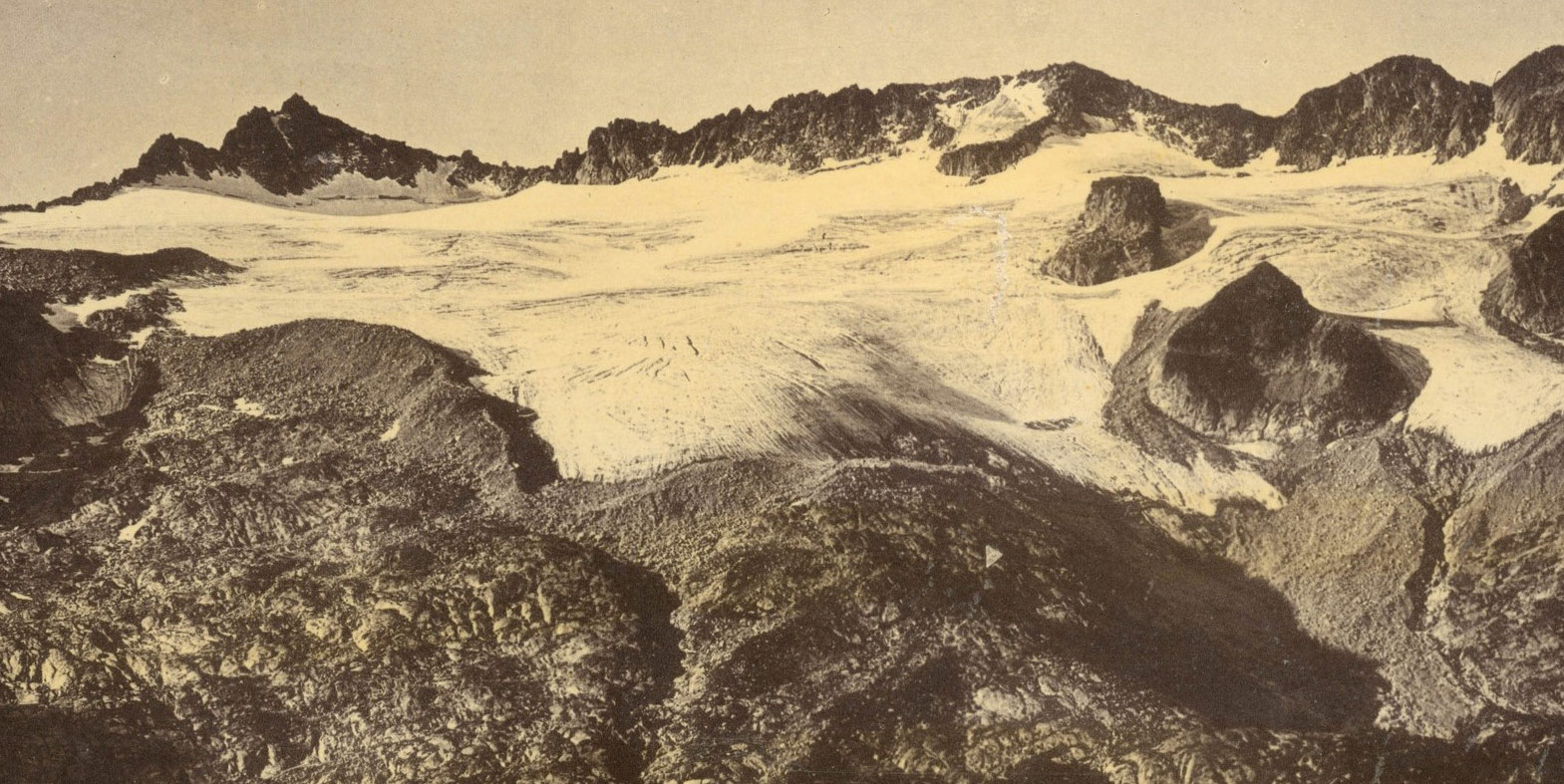
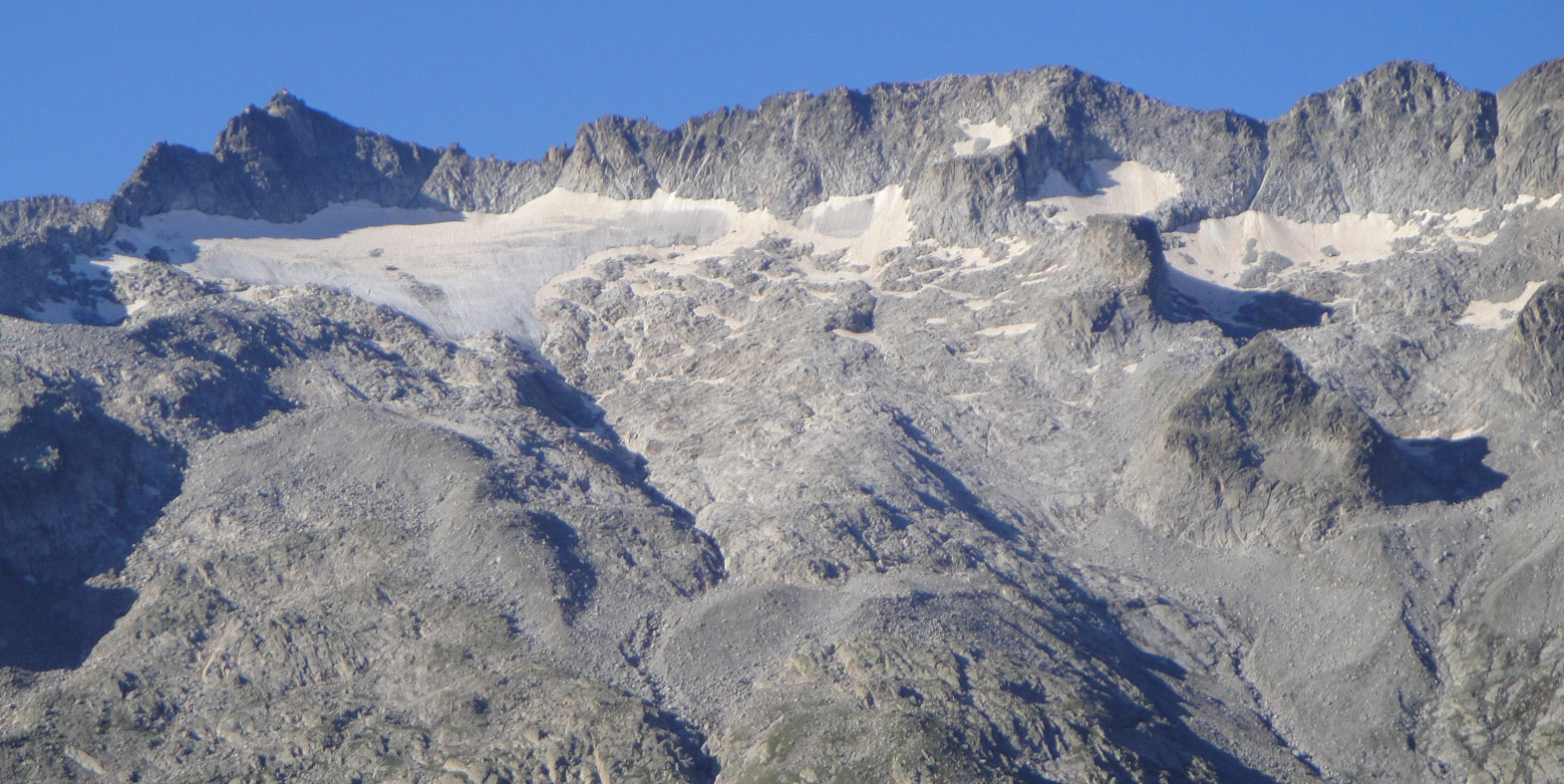
Comparison of 148 years.
Glacier of the Maladeta in 1876, very close to its moraines of the LIA (Postcard “Le Glacier de la Maladeta -vu de la Pena Blanc-” – Photolithografhie A. Quinsac, in Toulouse).
East glacier and West Glacier of the Maladeta in 2024, year in which the snow cover has been higher than in previous years and covers the glacier ice (Jordi Camins).


Comparison 2007 – 2012.
East Glacier of the Maladeta. The eastern bowl in 2007. Compare with the following two images (Jordi Camins).
East Glacier of the Maladeta in 2022. On the left, the eastern bowl with its heliport, the sector of distance from the glacier corresponds to the one in the two previous photographs. On the right of the photograph, the sector of the next fractionation that will form another independent heliport (Jordi Camins).


Comparison 125 years from the Portillon Supérieur sector.
The Maladeta Glacier at the beginning of the 20th century, and the Cordier Tower, the sector where it was split in 1990 into the two current glaciers (Planche 15. Glacier de la Maladette-vue du portillon d’en haut. Probable author M. Meys).
The Eastern Glacier of the Maladeta in 2022 from the Upper Portillon (Jordi Camins).


30-year comparison (loss of thickness and length 1992 to 2022).
East Glacier of the Maladeta in 1992 (Jordi Camins).
The East Glacier of the Maladeta in 2022. The deterioration of the ice tongue in the last two years stands out (Jordi Camins).
Glaciar Oriental de la Maladeta en 1992. (Jordi Camins).
El Glaciar Oriental de la Maladeta en 2022. Destaca el deterioro de la lengua de hielo en los últimos dos años. (Jordi Camins).


Comparison 38 years Occidental de la Maladeta 1985 to 2023.
Western Maladeta glacier in 1992. The convex shape of the glacier still denotes its healthy state (Jordi Camins).
Western Glacier of the Maladeta in 2023 when it was de-catalysed as a glacier. At the end of the summer it split into two glaciers, upper and lower (Javier Barco).

